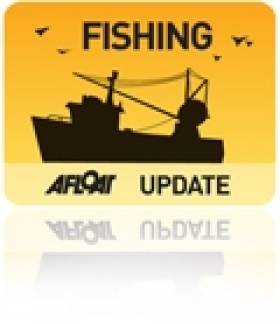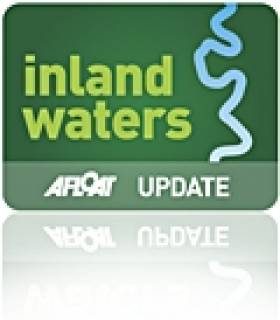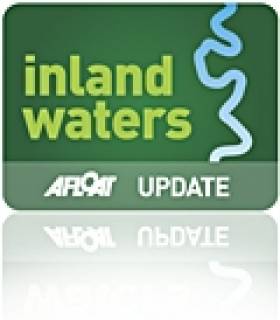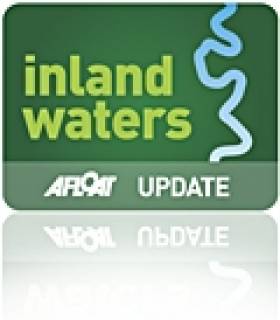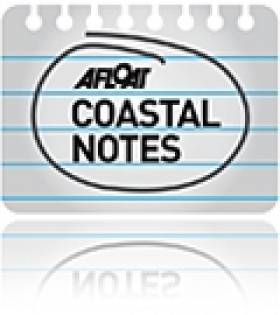Displaying items by tag: inland waters
#LoughNeagh - Families who have worked for generations in eel farming on Lough Neagh - putting the region on the map for its world-renowned eels – fear they are being pushed out of the industry by "unfair" policies, say campaigners.
And as Belfast Live reports, the authorities in charge of eel permits have also been accused of refusing to renew existing licences.
The Lough Neagh United Fishermen, or LNUF, says many long-time eel fishing families "grew up with the assurance that [they] would be 'looked after'".
Spokesperson Brian Wylie says his group's members also hold shares in the Lough Neagh Fishermen's Co-operative Society Ltd, which is authorised to issue permits for eel fishing.
"Our members are being ignored [by the co-operative] on a yearly basis, and can clearly see permits being handed out to people and their families never were involved in the ethos or concept," he adds.
Belfast Live has more on the story HERE.
'Ongoing Liaison' Over Canal Bye-Law Proposals
#InlandWaters - Discussions between the Department of Heritage and Waterways Ireland over new draft bye-laws for Ireland's canals are "ongoing", according to Minister Heather Humphreys.
The minister was responding to a Dáil question on Thursday (30 April) from Kildare North TD Bernard Durkin on what moves have been made on the controversial bye-law changes suggested in last summer's report by Waterways Ireland.
"I am aware that concerns have been raised regarding certain aspects of the proposed bye-laws," she wrote, while reiterating her previous statement of 10 February last that the main stakeholders, as well as current permit holders on the three waterways – the Royal and Grand Canals and the Barrow Navigation – were invited to submit their views.
Though the minister did not address specific concerns such as those raised by the Inland Waterways Association of Ireland (IWAI) – which produced a long list of criticisms – she repeated the position that there is "ongoing liaison" between Waterways Ireland and her department, and that any final draft of bye-laws would be referred to her to decide upon.
She added that it is her "intention to afford interested deputies and senators an opportunity to discuss the proposals" before such a decision is made.
South American River Rat Found In Tipperary Stream
#MarineWildlife - Rodney is the name given to a giant river rat found swimming in a Tipperary stream last week, as TheJournal.ie reports.
The three-foot rodent is a coypu, native to South America, and is the first of his kind ever found in the wild in Ireland.
After his discovering in a river in Kilnasculy, Rodney is now in the care of the Kildare Animal Foundation Wildlife Unit, whose Dan Donoher believes the animal must have been a kept as a pet before escaping or being released by its owner.
The coypu is better known as the nutria in the United States, where it is regarded as a destructive invasive species and pest, particularly in the southern Gulf Coast region.
But Dononher told RTÉ Radio 1's John Murray Show that there's no fear of a coypu invasion in Ireland's waterways just yet.
#PhotoContest - Waterways Ireland has launched its Waterways Explorers Photo Competition for primary schools.
The contest is open to entries from fifth and sixth class in the Republic and P6 and P7 pupils in the North.
Entering is easy: simply take your photograph – which must be located on one of the waterways managed by Waterways Ireland – and email it to [email protected] along with your completed entry form.
The closing date for receipt of entries is Friday 29 May 2015. Links to the entry form and terms and conditions are available HERE.
There are great prizes to be won so get snapping!
President Opens Refurbished Galway Fishery Watchtower
#GalwayHarbour - President Michael D Higgins performed the official opening of the Fishery Watchtower Museum at Wolfe Tone Bridge in Galway city centre last Friday 24 March.
Inland Fisheries Ireland (IFI) worked in partnership with Duchas na Gaillimhe/Galway Civic Trust in revitalising the Victorian-era structure at the mouth of the River Corrib.
As owner of the tower, IFI said it was acutely aware of its responsibility to preserve the protected landmark and to ensure that safe access was provided.
The Watchtower was acquired when the Galway Fishery, popular for salmon angling, was purchased by the State in 1978.
At that time, the tower had a very practical purpose and in addition to monitoring salmon movements was also used to ensure that no untoward activity (poaching) occurred on the adjacent section of the Corrib, as well as acting as a base for a salmon draft net station. Following the purchase by the State netting of salmon ceased.
From 1997, the tower was operated by the trust as a tourist attraction and fisheries museum under a licence agreement with the WRFB, which was subsequently subsumed into IFI, and proved popular with tourists and locals alike up until the tower became inaccessible in 2007 due to deterioration in the access bridge.
With safe access to the tower no longer available, pressure came on for the bridge to be replaced, and the work of Delo Collier of the trust, in never giving up on the project, was instrumental in bringing about the provision of the new bridge and refurbishment works.
Others key to bringing the tower back to life include IFI fishery manager Seamus Hartigan and Caroline McNeill, involved in the management of the interior refurbishment.
IFI also acknowledged the support of Galway City Council throughout – in particular that provided by Kevin Swift, who worked with IFI and the trust when funding was being sought through Fáilte Ireland over a number of years to replace the bridge.
When Fáilte Ireland eventually advised in early 2012 that it could not support the project, IFI decided to proceed and fund the new bridge with some support from Galway City Council.
The old collapsed bridge, which had stood for 160 years since the tower’s construction in the mid-1800s, was removed by IFI personnel in June 2012 – not an easy undertaking given its location and dangerous condition.
The new replacement bridge was designed by local architects Simon J Kelly & Co and blends in seamlessly with the pedestrian walkway on the upstream side of Wolfe Tone Bridge, which it abuts. The new bridge was installed by Ward & Burke Construction Ltd in March 2013 and engineering and advisory services were provided by ARUP.
Following the installation of the new bridge, the trust and IFI again had easy access to the tower and work began in partnership to refurbish the building which had deteriorated over the previous number of years.
IFI is sure anyone who has the opportunity to visit the tower will be impressed with the work done, the museum exhibits and of course the unobstructed panoramic views of Galway Bay and the lower Corrib.
Since its 'unofficial' opening in late summer 2014, almost 4,000 have visited the tower, and IFI says the comments in the visitors book have been very complimentary.
The fisheries body is also sure that anyone who has the opportunity to visit – whether tourists or local Galwegians – will be impressed with the work done, the museum exhibits and the unobstructed panoramic views it affords of Galway Bay and the lower Corrib.
Talk On The Grand Canal In Offaly 1794-1804
#InlandWaters - Tullamore's Offaly History Centre will host a talk on Monday 23 March on the history of the Grand Canal in Offaly from 1794 to 1804.
Presented by James Scully, the talk will be based on various contemporary sources, most notably the invaluable records within the Grand Canal minute books.
Shannon Navigation – Tarmonbarry Lock
The re-opening of Tarmonbarry Lock on the Shannon Navigation has been extended until Wed 1 Apr 2015. Further information may be had by contacting Waterways Ireland's Carrick-on-Shannon office at 07196-50563 or the lockkeeper at 087-9222020.
Waterways Ireland Proposes Changes To Lough Erne Bye-laws
#InlandWaters - Waterways Ireland, with the approval of Northern Ireland's Department of Culture, Arts & Leisure (DCAL), has made proposals to change the Lough Erne Navigation Bye-laws.
A limited number of changes are being proposed with the intention of enhancing the visitor recreational experience and increasing the deterrent to blocking of public moorings by private boatowners.
The enhancement of the visitor's recreational experience is being sought through two measures: the increase of the current 48-hour maximum mooring period on a public jetty to three days, with a requirement to then move more than 3km away before mooring on another public jetty; and the ability to flexibly place and remove speed and wake restrictions.
Both changes are focused on supporting the ability of boaters of all kinds to tour, extend their stay and enjoy events and recreational activity on Lough Erne.
The new measures will deter the persistent occupation of public moorings by an increasing cohort of private boaters, particularly in Enniskillen.
Currently Waterways Ireland is required after a series of warnings to take offenders to court where the magistrate has the ability to impose a maximum penalty of £50 per offence.
The proposed increase in fines to a maximum of £1,000 is the Standard Scales of Fines Level 3 (of 5) established under the Fines and Penalties (Northern Ireland) Order 1984 and is currently in use in the Regulation 49(4) of The Water (Northern Ireland) Order 1999, the overarching bye-laws for navigation on Lough Erne. The magistrate will then have the power to impose a fine up to £1,000.
Additionally, Waterways Ireland is seeking the power to remove from Lough Erne abandoned or sunken vessels and boats in breach of the bye-laws after a 30-day notice period has been extended to the owner.
Waterways Ireland relied in the past on educating and advising boat owners to warn of breaches and asking them to comply, and this will remain its primary focus. However, the number of boat owners persistently breaking the bye-laws, particularly mooring bye-laws by mooring their boat on a permanent basis at a public mooring, has grown substantially in recent years and has become an impediment to the free movement of boats particularly around Enniskillen.
Waterways Ireland and DCAL have agreed to seek these changes to the bye-laws to enhance the opportunities for hire cruisers, visiting boaters, event organisers and visitors, and recreational/activity centres to continue to use Lough Erne as an open and freely moving waterway now and into the future.
A public consultation period has opened for individuals, groups and organisations to comment on the proposed changes and will run until the 22nd May 2015. A public information event is also being held from 3-7pm next Tuesday 10 March 2015 to enable interested people to meet with Waterways Ireland staff and give their feedback.
For those unable to attend, the proposed changes are detailed on the Waterways Ireland website HERE, where an online submission form is also available.
Alternatively, people can visit the Waterways Ireland Headquarters weekdays from 10am-1pm and 2pm-5pm to view the documents and complete a submission.
The bye-laws being changed are the Lough Erne (Navigation) Bye-laws (Northern Ireland) 1978 as amended by The Lough Erne (Navigation) (Amendment) Bye-laws (Northern Ireland) 1986.
Coastal, Lake Spots Among Ireland's 'Most Picturesque Destinations'
#CoastalNotes - Coastal spots and waterways feature heavily in HeraldScotland's list of the most picturesque destinations to visit in Ireland.
Some of these will be well known to locals and tourists alike, such as the wonders of Antrim's coast and glens (not least the Giant's Causeway and the Carrick-a-Rede rope bridge), the majestic Ring of Kerry and the breathtaking Cliffs of Moher.
But some perhaps lesser-known spots getting their due here include the Cavan lake country – with one to explore by kayak for every day of the year – and the Cooley Peninsula in Co Louth.
HeraldScotland has much more on the story HERE.
Royal Canal: Newcomen Bridge Lift Dates For 2015
#InlandWaters - The schedule of lift dates 2015 for Newcomen Bridge on the Royal Canal in Dublin city centre runs from the end of April till the end of September.
Arrangements have been made for Irish Rail to open the bridge on the following dates and times, if there is demand:
Monday 27 April 11am–1pm
Sunday 3 May 9am–1pm
Saturday 30 May 9am–1pm
Thursday 11 June 11am–1pm
Thursday 9 July 11am–1pm
Thursday 23 July 11am–1pm
Monday 24 August 11am–1pm
Monday 21 September 11am–1pm
The Waterways Ireland Eastern Regional Office requires two weeks' notice from boaters for use of these lifts.
Should there not be demand (a minimum of two boats for passage) for a particular date, Irish Rail will be notified by Waterways Ireland that this lift is cancelled.
A maximum number of boats passing will be implemented to keep to the times given above for the planned lifts (16 for weekend lifts, eight for weekday lifts).
On day of lift, boaters and passengers must follow guidance from Waterways Ireland staff about sequence of passage under the bridge and through Lock 1, and must remain within signed and designated areas.
To give notice of any intended passage of Newcomen Bridge, contact the Eastern Regional Office at 01 868 0148 or [email protected]


























